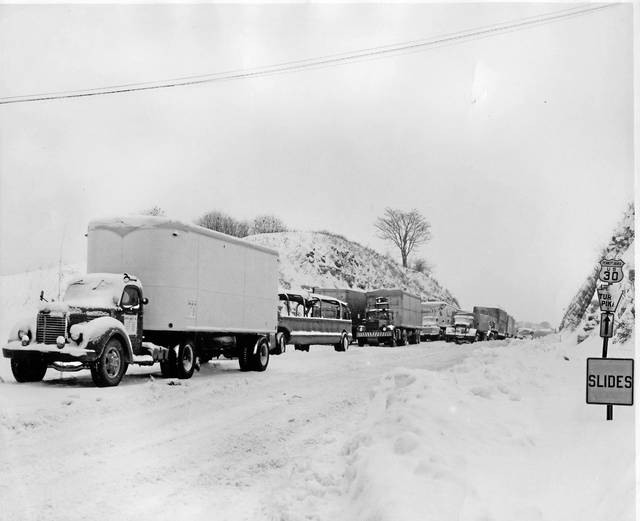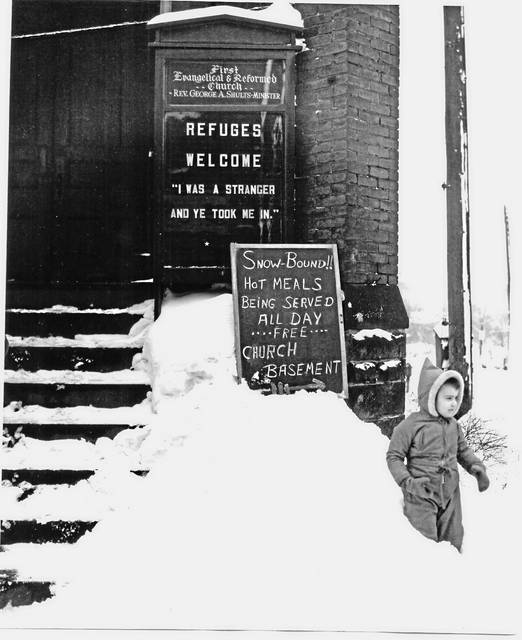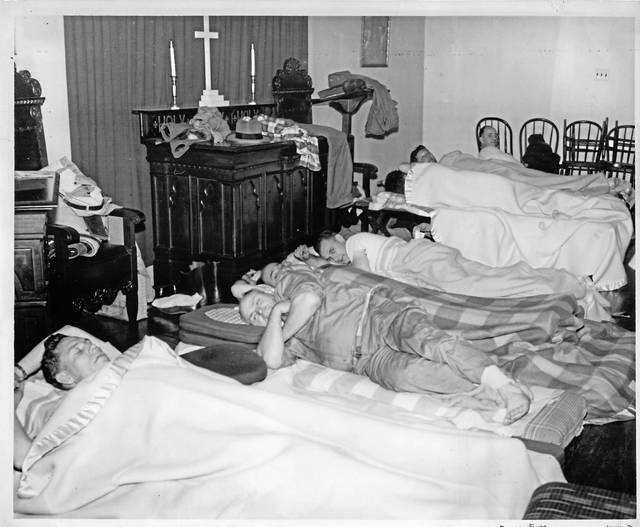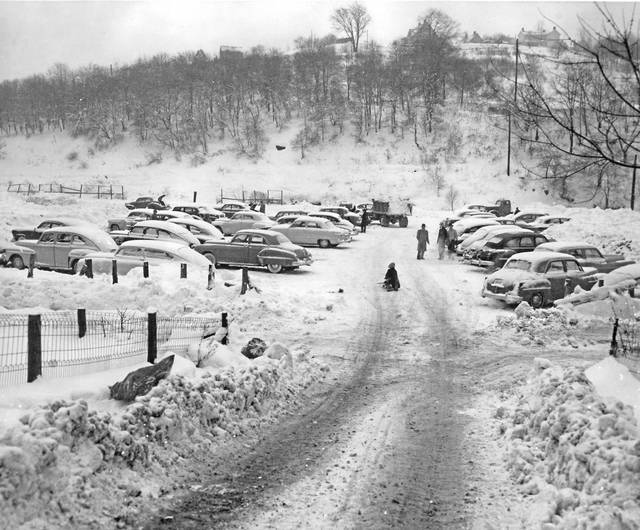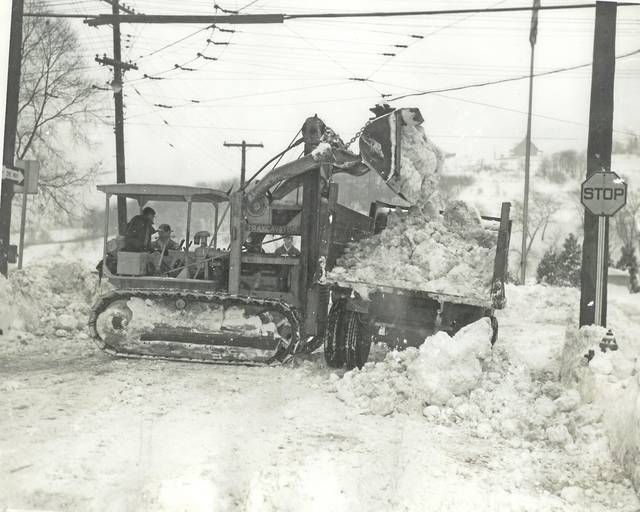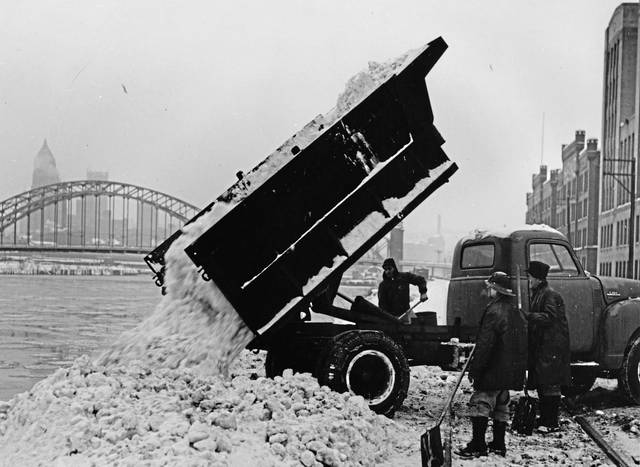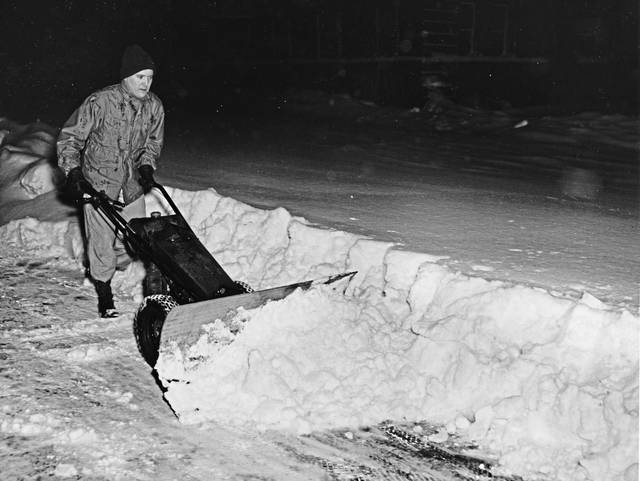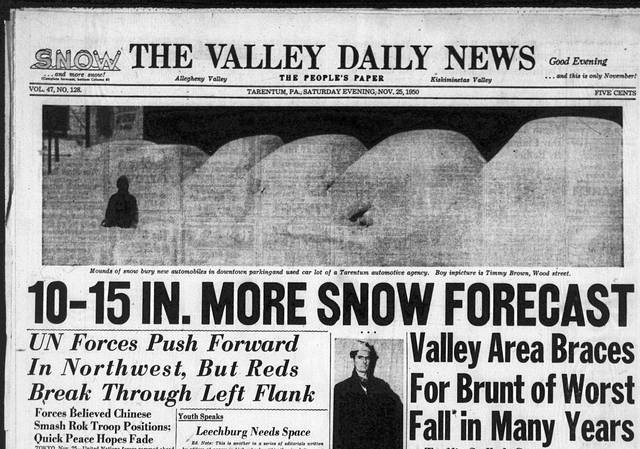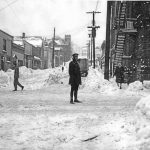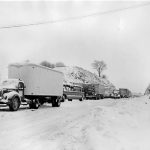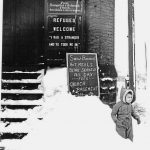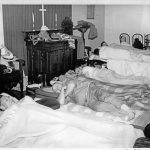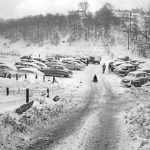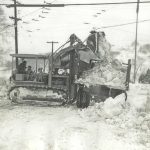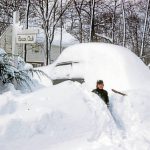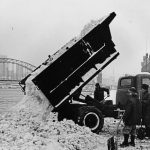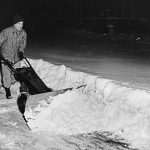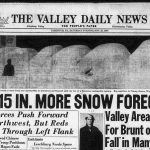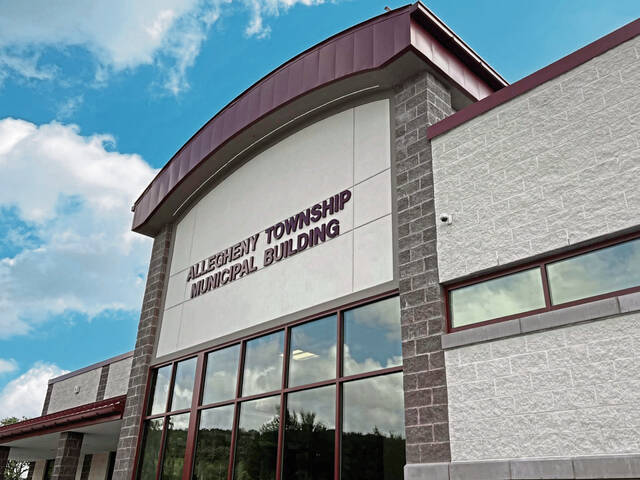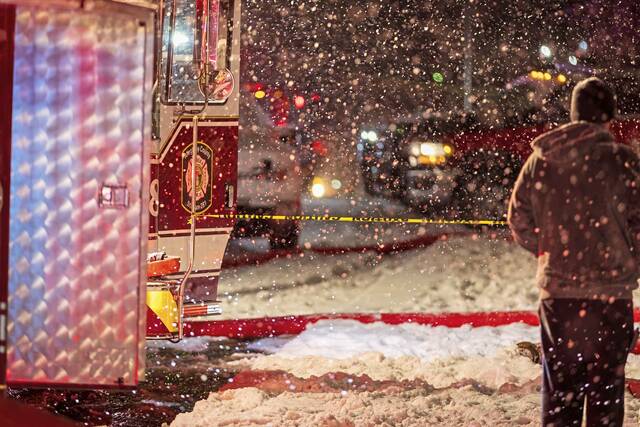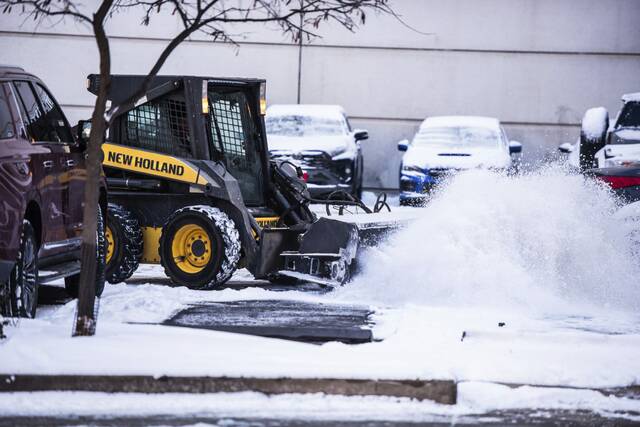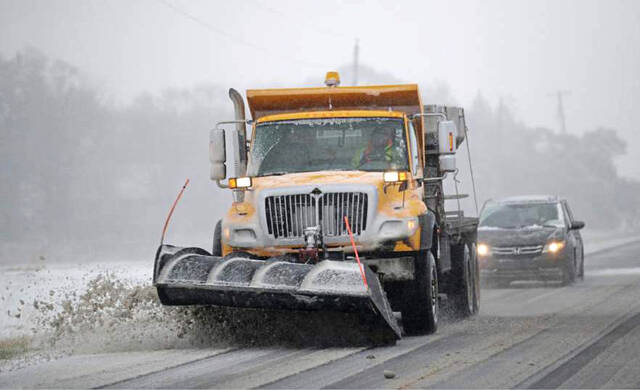Carl Huszar’s father and uncle had to walk several miles to get milk from a North Huntingdon farm because the roads were impassable.
Faye Dames Matty, who now lives in Fort Myers, Fla., learned her father made it all the way from the Virginia military base where he was stationed to Shaler when he got news of her imminent birth. He had to walk the final mile to her maternal grandparents’ home after his car got stuck.
Literally or figuratively, many area residents went the extra mile to give or get help 70 years ago. From Nov. 24-26, 1950, a record-setting storm dumped more than 27 inches of snow on Southwestern Pennsylvania — the weekend following Thanksgiving Day, when the temperature had plummeted to 5 degrees.
Locally known as The Big Snow in the Pittsburgh area, others across the Midwest and Northeast often refer to it as the Great Appalachian Storm. Coburn Creek, W.Va., was buried under 62 inches of snow, according to the National Oceanic and Atmospheric Administration.
The storm contributed to at least 160 deaths and garnered NOAA’s worst ranking — as an extreme Category 5 storm — in the Ohio Valley. Even a lesser Category 4 storm is considered “crippling.”
More than 17 inches had buried the Alle-Kiski Valley by noon Nov. 25, with another 10 to 15 inches in the forecast, the Valley News Dispatch reported at the time. Snow started falling at 5 a.m. Nov. 24 and continued without stop for 17 hours. Another 10 to 15 inches was expected that weekend, the paper reported.
Rural roads were at a standstill, and ambulances could not pass on Tarentum streets. The Eureka Co. had to use its squad car to get a heart attack patient to Allegheny Valley Hospital. Sarver officials desperately searched for a doctor to help an expectant mother after she was unable to get to the hospital by ambulance.
“It was a difficult time for everyone,” said Huszar, who was then just 2. “They were struggling to get the stuff to keep their babies going. My dad and uncle had to walk a couple miles to a farm to get milk for me and my cousin.”
Huszar, president of the Norwin Historical Society, knows the Irwin area had a particular challenge during the storm, and it rose to the occasion.
At the time, the Pennsylvania Turnpike had its western end at Irwin. Drivers who exited the toll road could make no headway on the snow-covered grades of Route 30, so the community went into action to assist stranded travelers.
“Various homes and businesses put up the people who were stuck, and churches provided food,” Huszar said.
Local history buff and writer Bob Cupp of Plum noted a number of truck drivers found shelter at a Lutheran church in Irwin.
“They were stranded on Saturday night (Nov. 25), and many could not move their trucks until Wednesday or Thursday of the next week,” he said.
A community playground was transformed into an emergency parking lot for snowbound motorists.
Cupp was impressed by the generosity of the family of Lester and Dorothy Peters, who lived along Route 30 west of Irwin, and Dorothy’s parents, Mary and Thompson Everingham, who operated an antique shop in their home two doors away. Cupp wrote that “38 people, including seven children, were crammed into the Peters home, with another 43 people, including 14 children, in the slightly larger Everingham house.”
At the time, an official at Pittsburgh Steel’s Monessen plant told The Monessen Daily Independent that hundreds of men were unable to leave the mill Friday night and continued to work in their departments on overtime.
A North Braddock man died after an icicle broke loose and struck him at U.S. Steel’s Edgar Thomson Works.
In Pittsburgh, thousands of stranded vehicles clogged streets and trolley routes, stores closed and members of the National Guard were deployed to patrol the area. A Pitt-Penn State football game scheduled for Saturday at Pitt Stadium was delayed until Monday.
In 2013, Doris Harris told the Tribune-Review how her firefighter husband, Charles, left home after Thanksgiving dinner to report to his station in Oakland.
“He didn’t come home for a week,” she said. “With all the snow, none of the other forces could get in, so the ones that were there had to stay.”
The Big Storm made a big impression on the youngest of those who lived through it.
Mary Lou Townsend, president of the Latrobe Area Historical Society, was 4 at the time. She recalled how overwhelming the snowdrifts seemed at her family’s Derry home.
“My sisters and I got lost in the snow in our backyard,” she said. “It was deeper than we were tall. We didn’t have snow blowers then.”
“It was definitely something you don’t forget,” said Ed Lybarger of Wernersville, Berks County, who was then a 5-year-old boy living with his parents in Peters Township.
“We had no electricity for a period of time,” he said. “That meant no radio. We didn’t have a television set then.”
Fortunately, his family had a gas stove for cooking, and his father rigged some batteries to power the blower on their gas furnace.
The township used a large road grader to clear snow from the local roads. But, said Lybarger, “I don’t think anybody went anywhere until Monday, when my dad went to work in Mt. Lebanon.”
After the storm, above-normal temperatures during the first week of December quickly melted the accumulated snow, leading to flooding in some areas. At Pittsburgh, the Ohio River reached 28.5 feet, 4 feet above flood stage, according to NOAA.



